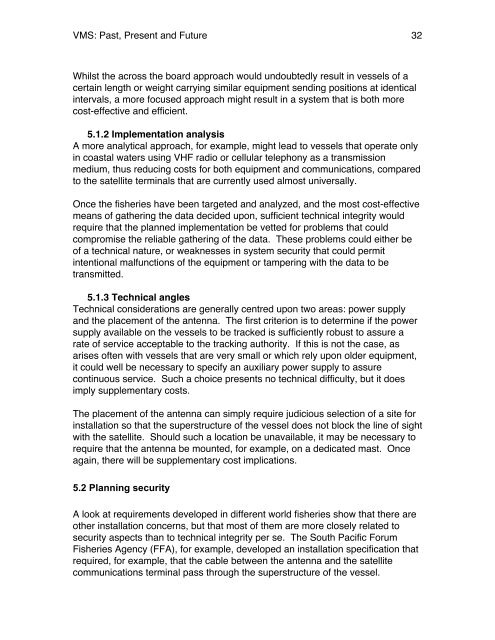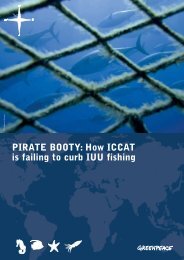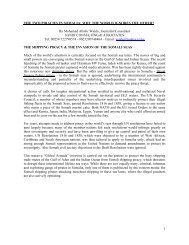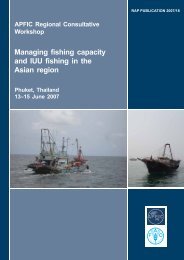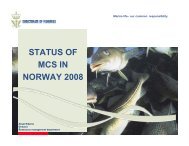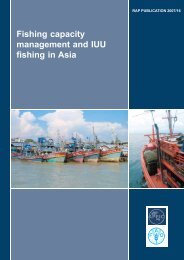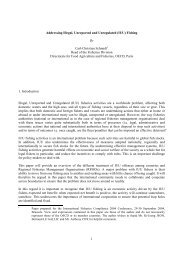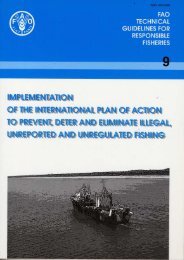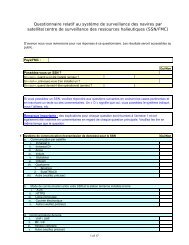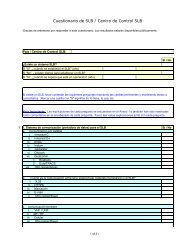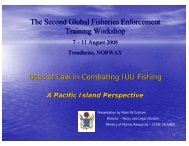Fishing Vessel Monitoring Systems: Past, Present and Future
Fishing Vessel Monitoring Systems: Past, Present and Future
Fishing Vessel Monitoring Systems: Past, Present and Future
Create successful ePaper yourself
Turn your PDF publications into a flip-book with our unique Google optimized e-Paper software.
VMS: <strong>Past</strong>, <strong>Present</strong> <strong>and</strong> <strong>Future</strong> 32<br />
Whilst the across the board approach would undoubtedly result in vessels of a<br />
certain length or weight carrying similar equipment sending positions at identical<br />
intervals, a more focused approach might result in a system that is both more<br />
cost-effective <strong>and</strong> efficient.<br />
5.1.2 Implementation analysis<br />
A more analytical approach, for example, might lead to vessels that operate only<br />
in coastal waters using VHF radio or cellular telephony as a transmission<br />
medium, thus reducing costs for both equipment <strong>and</strong> communications, compared<br />
to the satellite terminals that are currently used almost universally.<br />
Once the fisheries have been targeted <strong>and</strong> analyzed, <strong>and</strong> the most cost-effective<br />
means of gathering the data decided upon, sufficient technical integrity would<br />
require that the planned implementation be vetted for problems that could<br />
compromise the reliable gathering of the data. These problems could either be<br />
of a technical nature, or weaknesses in system security that could permit<br />
intentional malfunctions of the equipment or tampering with the data to be<br />
transmitted.<br />
5.1.3 Technical angles<br />
Technical considerations are generally centred upon two areas: power supply<br />
<strong>and</strong> the placement of the antenna. The first criterion is to determine if the power<br />
supply available on the vessels to be tracked is sufficiently robust to assure a<br />
rate of service acceptable to the tracking authority. If this is not the case, as<br />
arises often with vessels that are very small or which rely upon older equipment,<br />
it could well be necessary to specify an auxiliary power supply to assure<br />
continuous service. Such a choice presents no technical difficulty, but it does<br />
imply supplementary costs.<br />
The placement of the antenna can simply require judicious selection of a site for<br />
installation so that the superstructure of the vessel does not block the line of sight<br />
with the satellite. Should such a location be unavailable, it may be necessary to<br />
require that the antenna be mounted, for example, on a dedicated mast. Once<br />
again, there will be supplementary cost implications.<br />
5.2 Planning security<br />
A look at requirements developed in different world fisheries show that there are<br />
other installation concerns, but that most of them are more closely related to<br />
security aspects than to technical integrity per se. The South Pacific Forum<br />
Fisheries Agency (FFA), for example, developed an installation specification that<br />
required, for example, that the cable between the antenna <strong>and</strong> the satellite<br />
communications terminal pass through the superstructure of the vessel.


